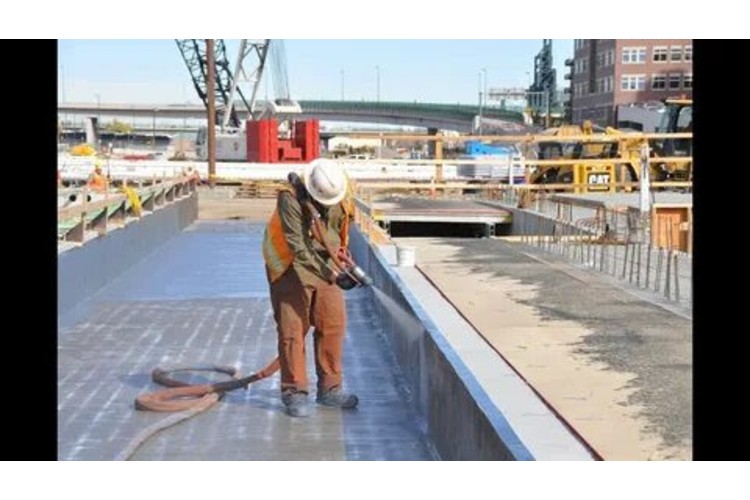The Construction Chemicals Market is undergoing a transformative shift, with sustainability emerging as a defining factor in purchasing decisions, production processes, and regulatory frameworks. From green building certifications to carbon-neutral manufacturing, the industry is seeing an unprecedented demand for eco-friendly solutions. The push toward sustainable construction chemicals is not merely a passing trend—it’s becoming an operational necessity for companies, governments, and project developers worldwide.
Growing Regulatory Pressure Driving Change
In recent years, environmental regulations have intensified across major construction markets. Authorities in the European Union, North America, and Asia-Pacific are implementing strict emission controls and sustainability standards that directly impact chemical production and usage. These regulations mandate the reduction of volatile organic compounds (VOCs), the use of recyclable packaging, and the adoption of low-carbon manufacturing processes. For example, green building certification programs such as LEED and BREEAM now reward the use of sustainable construction chemicals in adhesives, sealants, and coatings.
Such stringent requirements are reshaping the Construction Chemicals Market by pushing companies to innovate with bio-based materials, water-borne formulations, and non-toxic alternatives. Manufacturers that fail to adapt risk losing market share, while those that prioritize sustainable R&D are likely to gain a competitive edge.
Rising Demand for Green Building Projects
The global construction sector is experiencing a steady shift toward green building designs, fueled by growing environmental awareness and corporate commitments to sustainability. Residential and commercial developers are increasingly choosing products that reduce environmental impact and improve occupant health.
Sustainable construction chemicals—such as low-VOC paints, eco-friendly admixtures, and bio-based insulation—are becoming standard in large-scale projects. From skyscrapers in the Middle East to affordable housing initiatives in Asia, the demand for materials that align with sustainable building practices is surging.
According to Fairfield Market Research, green building material adoption is one of the strongest growth drivers for the sustainable segment of the Construction Chemicals Market, creating lucrative opportunities for manufacturers who can deliver high-performance, eco-conscious solutions.
Technological Advancements Fueling Innovation
Technology is accelerating the development of sustainable construction chemicals. The integration of nanotechnology, biotechnology, and advanced polymer science is enabling the creation of products that offer both environmental benefits and superior performance. For instance, self-healing concrete admixtures reduce maintenance needs, extending the life cycle of infrastructure while minimizing resource consumption.
Similarly, photocatalyst coatings are being developed to break down air pollutants, transforming building facades into active air purifiers. Advances in manufacturing processes, such as energy-efficient reactors and renewable raw material sourcing, further reduce the carbon footprint of chemical production. These innovations are not only meeting sustainability benchmarks but also offering measurable economic benefits to end-users.
Corporate Sustainability Commitments Reshaping Procurement
Major construction firms, real estate developers, and public agencies are integrating sustainability into their procurement strategies. Corporate ESG (Environmental, Social, and Governance) policies increasingly mandate the use of certified green products in building projects. This shift is filtering down the supply chain, placing direct pressure on chemical manufacturers to adapt their portfolios.
In response, industry leaders are expanding their range of eco-friendly solutions, from recyclable packaging to products with Environmental Product Declarations (EPDs). As more companies commit to net-zero carbon targets, the demand for sustainable construction chemicals is expected to surge, further boosting this niche within the broader Construction Chemicals Market.
Cost Efficiency Through Lifecycle Benefits
While sustainable construction chemicals may come with a higher upfront cost, they often deliver significant savings over the life of a building or infrastructure project. For example, advanced waterproofing membranes extend the operational life of structures, reducing repair and replacement costs. Energy-efficient insulation materials can lower heating and cooling expenses, directly benefiting property owners.
These lifecycle benefits make sustainable construction chemicals an attractive option for developers focused on long-term profitability. In many cases, the total cost of ownership (TCO) is lower compared to conventional alternatives, especially when factoring in reduced maintenance, energy efficiency, and compliance with evolving environmental regulations.
Regional Hotspots of Growth
The adoption of sustainable construction chemicals is gaining traction worldwide, but certain regions are leading the movement.
- Europe remains at the forefront due to its rigorous environmental legislation and ambitious carbon neutrality goals. The European Green Deal is pushing for a complete overhaul of the building materials industry toward sustainability.
- Asia-Pacific is seeing rapid uptake, driven by urbanization, smart city projects, and government-backed green building initiatives in China, India, and Southeast Asia.
- North America continues to expand its green construction footprint, with growing investments in renewable infrastructure and corporate sustainability pledges.
These regional trends indicate a widespread shift, ensuring that sustainability remains a central pillar of the global Construction Chemicals Market over the coming decade.
The Role of Partnerships and Collaborations
Partnerships between manufacturers, construction companies, and research institutions are critical to advancing sustainability goals. Collaborative R&D projects are producing innovative products such as carbon-capturing concrete additives and biodegradable formwork agents.
Industry alliances are also working to standardize sustainability certifications, ensuring that green claims are verifiable and trustworthy. Such efforts build market confidence and encourage broader adoption of sustainable products across both developed and emerging markets.
Challenges and the Road Ahead
Despite its rapid growth, the sustainable construction chemicals segment faces challenges. Limited awareness in certain developing regions, higher initial costs, and the need for robust global supply chains can slow adoption rates. Additionally, ensuring consistent product quality and performance while maintaining eco-friendly credentials requires ongoing investment in research and quality control.
However, the momentum behind sustainable solutions is undeniable. Market leaders are actively addressing these challenges through educational campaigns, competitive pricing strategies, and regional manufacturing hubs that reduce logistical costs and emissions.
Sustainability as the Industry Standard
The shift toward sustainable construction chemicals is not a niche movement—it’s becoming the standard in the global building materials industry. As governments tighten environmental regulations, developers embrace green building practices, and technological innovations unlock new possibilities, the demand for eco-friendly construction solutions will only intensify.
For manufacturers, this represents both a challenge and an opportunity. Those that invest in sustainable innovation, transparent certification, and strategic partnerships will be well-positioned to lead the market in the years ahead.
In short, sustainability is no longer optional in the Construction Chemicals Market—it’s the blueprint for future growth.













